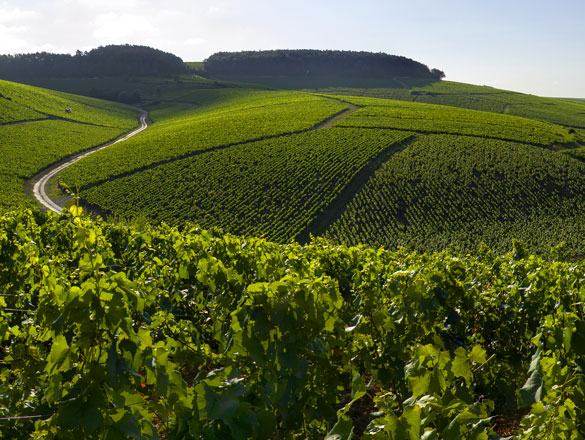

The vineyards of Bourgogne produce some great wines with a historical and international reputation. However, the region is not simply limited to its iconic appellations. In addition to its Village Premier Cru and Grand Cru AOCs, it also produces a range of wonderful Régionale and Village appellations to explore.
You will also find a full list of the Bourgogne’s Climats and lieux-dits on this page.
Check out the complete list of the 84 Bourgogne appellations.
However, your exploration has only just begun. Bourgogne wines have never before offered such high quality. Besides our range of internationally celebrated wines, try some of our lesser-known appellations where there are lots of surprises in store.
And for a fun way to find out more about the wines on offer, try out our “Which Bourgogne wine is right for me?” quiz, or check out Bourgogne Maps to take an interactive tour of the region.
Grand Cru appellation
VIGNOBLES DE CHABLIS ET DU GRAND AUXERROIS
13 janvier 1938
Whites exclusively - Chardonnay.
Area in production*:
1 hectare (ha) = 10,000 m² = 24 ouvrées.
100.89 ha
Chablis Grand Cru: 2.93 ha
Blanchot: 12.51 ha
Bougros: 15.12 ha
Les Clos: 25.79 ha
Grenouilles: 9.38 ha
Preuses: 11.25 ha
Valmur: 10.35 ha
Vaudésir: 13.56 ha
Average annual yield**:
1 hectolitre (hl) = 100 litres = 133 bottles.
4,056 hl
*In 2022 **5-year average, 2017-2021
Appellation Grand Cru of the Chablis wine-growing region (Yonne).
The appellation may be followed by the name of one of the following 7 Climats (named plots): Blanchot, Bougros, Les Clos, Grenouilles, Preuses, Valmur, Vaudésir.
Producing communes: Chablis, plus the hamlets of Fyé and Poinchy.

White: pure green-gold in colour, evolving to a light yellow with age. A wine with fine keeping properties (10-15 years, sometimes more). Intense mineral scents (flint) but with room for lime-flowers, dried fruits, almond and a discreet touch of honey. Field mushroom gives a strongly characteristic touch to this wine. On the palate, acidity and fat are in perfect balance, as are liveliness and dryness. It has all the charm of an inimitable and authentic wine. This is the jewel in the crown of the Chablis range, richly nuanced by the variations in each Climat.

The vivacity of this rich, full-bodied Chablis Grand Cru provides a great dry wine to pair with foie gras, its pronounced minerality offsetting the bitterness of this noble dish. The subtle complexity of its aromas and its long finish in the mouth mean it is destined to partner lobster, crawfish, (grilled or, more subtly, in a white sauce with or without mushrooms), and prawns. All fine-textured fish in cream sauce prove worthy allies, as do white meats and poultry in cream. Its minerality and liveliness also do a fine job of counterbalancing the saltiness of oysters.
Serving temperature: 12 to 14°C.

Petit Chablis, Chablis, Chablis Premier Cru, and Chablis Grand Cru - the wines of Chablis form a pyramid, with at its top the appellation Grand Cru (recognised since 13 January 1938).
Chablis Grand Cru comes from vineyards in the commune of Chablis to the North-East of the town and facing the sun at altitudes of 100-250 metres along the right bank of the little Serein river which waters the district. The Grand Cru Climats form a continuous band along the upper part of the valley from Bougros in the North-West, through Preuses, Vaudésir, Grenouilles, Valmur and Les Clos to Blanchot in the South-East.
The appellation Chablis Grand Cru is a single entity but divided between 7 Climats, the names of which may appear on the labels. Les Clos may be the original kernel of the Chablis vineyards, first exploited by the Cistercians of Pontigny.

Here vines grow on Marls and Kimmeridgian limestones containing tiny fossilised oysters called exogyra virgula. These rocks were formed during the Upper Jurassic, some 150 million years ago. It is one of the few French AOC to define itself in terms of its geology.
